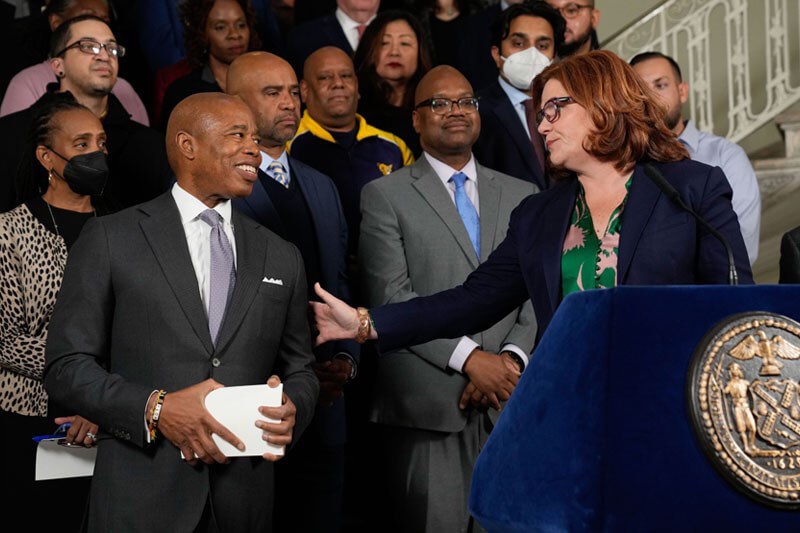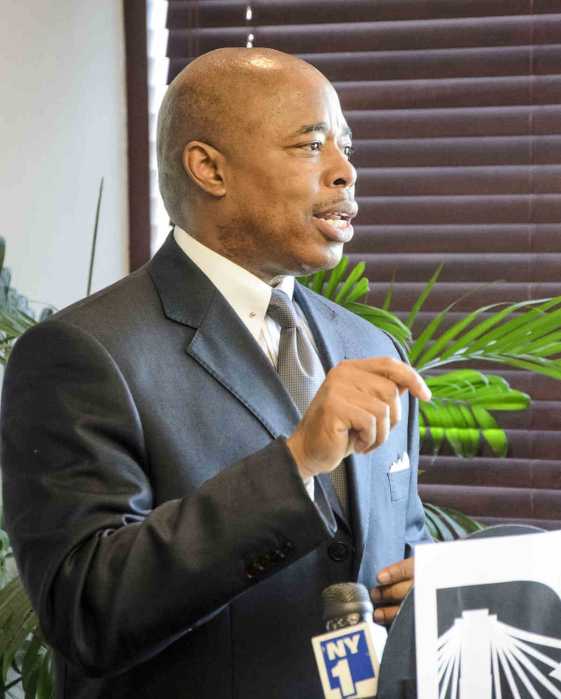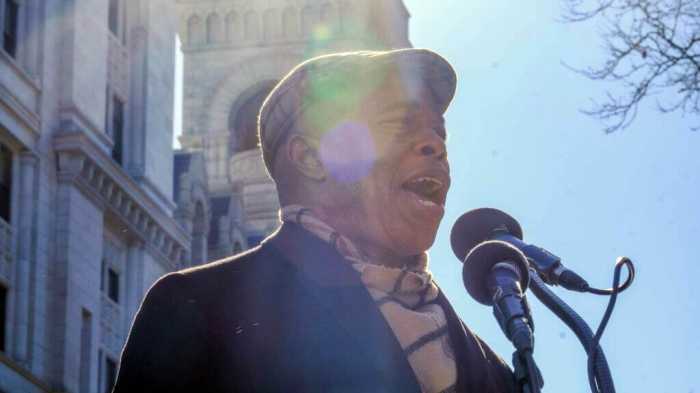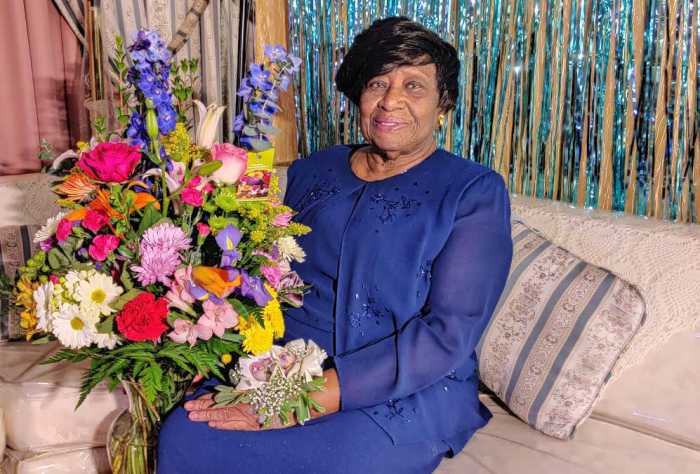New York City Mayor Eric Adams on Monday announced a package of major new housing reforms that will help New Yorkers exit the shelter system — or avoid it entirely — and move more quickly into permanent affordable housing, including in higher-income neighborhoods that have long been out of reach for lower income families.
The reforms include significant improvements to the City Family Homelessness and Eviction Prevention Supplement (CityFHEPS) housing voucher program that will ensure more New Yorkers are eligible for the program and make the voucher more flexible and easier to use.
Others are a groundbreaking pilot program – “Street to Housing” – that will place New Yorkers experiencing unsheltered homelessness directly into supportive housing; and a major expansion of the city’s housing mobility program, which helps families with federal housing vouchers access apartments in more neighborhoods across the five boroughs.
Together, these reforms deliver on key commitments in Adams’ “Housing Our Neighbors: A Blueprint for Housing and Homelessness,” which reoriented the city’s approach to homelessness, treating it as a housing problem.
This package also complements other key initiatives in the housing blueprint, including efforts to accelerate the creation of supportive housing, expand overall housing supply and eliminate unnecessary obstacles New Yorkers face to obtain housing.
“Our administration is tackling this crisis head-on by focusing on moving New Yorkers into stable, high-quality, affordable housing,” Mayor Adams said. “That’s what will define success for this administration, and that’s what these reforms are about.
“Like our housing blueprint, these changes were informed by those with lived experience of homelessness and on the front lines of this crisis,” he added. “And today, we’re starting a major effort to fast-track New Yorkers in need to permanent housing and getting stuff done for those who need help the most.”
“When we released the Adams administration blueprint, Housing Our Neighbors, we promised to put people over paperwork, and that’s what you’re seeing today,” said Chief Housing Officer Jessica Katz. “By streamlining access to CityFHEPS and supportive housing and expanding the power of our Housing Choice Vouchers, more New Yorkers will be able to remain stably housed, avoid the shelter system, and raise their families affordably.
“This is only the beginning of the work we have to do, but we made a promise to our neighbors to improve housing in this city, and we are following through on that effort,” she added.
“These reforms give us new flexibility and additional tools to shorten the pathway for families and individuals experiencing homelessness to move into safe, stable, and affordable housing,” said Deputy Mayor for Health and Human Services Anne Williams-Isom. “Thank you to our interagency partners and to our nonprofit partners for continuing to find new ways that we can work together to work toward our goal of finding every New Yorker a permanent home.”
By strengthening CityFHEPS, Adams said his administration will implement a package of reforms to the city-funded housing voucher program that will make vouchers more widely accessible and easier to use more quickly.
As part of this package, the administration is expanding CityFHEPS eligibility to include single adults working full-time on minimum wage, even if their income is slightly higher than 200 percent of the federal poverty level; putting money back in New Yorkers’ pockets by reducing the monthly contribution by CityFHEPS tenants who move into single-room occupancy units from 30 percent of their income to a maximum of $50 per month; and supporting working families by reducing the number of hours families are required to work to become eligible for CityFHEPS from 30 to 14 hours per week.
The administration is also covering the cost of apartment application fees for New Yorkers living in New York City Department of Homeless Services shelters; creating an option for CityFHEPS voucher-holders who choose to secure an apartment that rents above the CityFHEPS maximum to utilize a voucher by paying up to 40 percent of their income; and expanding Supplemental Security Income eligibility for CityFHEPS families from an adult in the household to any household member, such as a child.
In addition, the administration, among other things, is piloting a limited bonus equal to one month’s rent for landlords renting to CityFHEPS voucher-holders in high-cost neighborhoods; significantly increasing staffing at the New York City Department of Social Services (DSS) to speed up voucher processing and increase placements; and significantly increasing New York City Human Resources Administration staff presence in Housing Court to ensure eligible clients get quick access to financial assistance that will allow them to stay in their homes.
Adams said the implementation process for the benefit enhancements and pilot programs will begin immediately.
For the reforms that must be implemented through DSS rulemaking, he said the process will also begin immediately and include legally mandated public hearings.
Adams said the Street to Housing pilot program creates “a direct pathway for New Yorkers experiencing unsheltered homelessness to access permanent supportive housing without having to go through the shelter system.”
He said this initial pilot will connect up to 80 single adult clients with supportive housing.
Once placed in housing, Adams said clients will be supported by experienced not-for-profit provider-partner Volunteers of America Greater New York (VOA-GNY), as they complete the application from the very unit that can become their permanent home.
The mayor said the city will fund the supportive housing units during the transitional period when VOA-GNY staff work closely with each client to connect them to vital housing supports, including rental assistance.
He said VOA-GNY case managers will work closely with participants to connect them to key housing supports, such as rental and cash assistance; the Supplemental Nutrition Assistance Program (SNAP); and referrals for health and mental health supports.
The New York City Department of Health and Mental Hygiene (DOHMH) is providing funding for additional social workers at each of the VOA-GNY supportive housing programs to provide dedicated mental health and other health supports.
This pilot builds on the city’s ongoing efforts and unprecedented investments to address unsheltered homelessness and commitment to exploring every avenue to further expedite moves to supportive housing, especially for the most vulnerable.
In its housing blueprint, the Adams administration committed to accelerate the creation of supportive housing by completing the 15,000 supportive homes promised by 2030 two years ahead of schedule.
The blueprint dedicates an entire chapter to reducing administrative burdens and unnecessary paperwork that slows down the process of getting New Yorkers – particularly those in the shelter system – into permanent, supportive housing.
The administration also initiated a shift in focus from deals closed on paper to New Yorkers moving into homes, as reflected in the thousands of New Yorkers who had formerly experienced homelessness who moved into permanent homes in Fiscal Year 2022 and the new metrics included in the 2022 Mayor’s Management Report.
Adams takes major steps to access quicker high-quality housing

New York City Mayor Eric Adams.
Office of Mayor Eric Adams

























